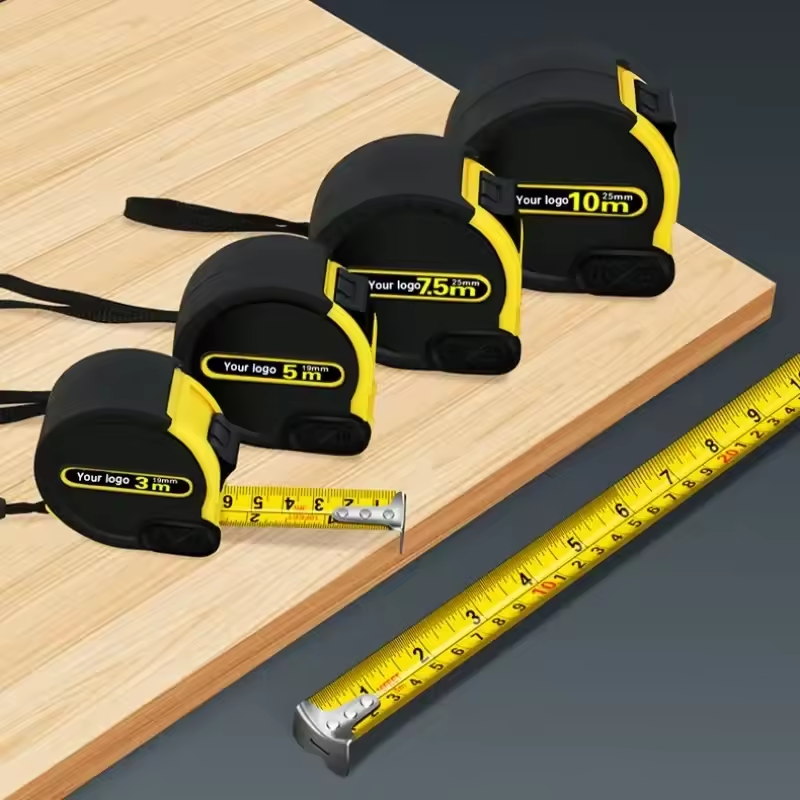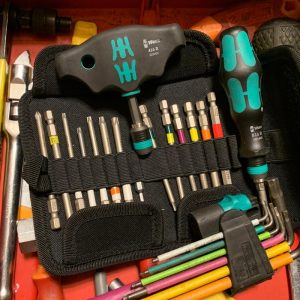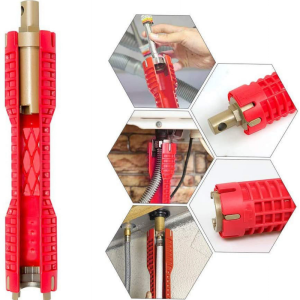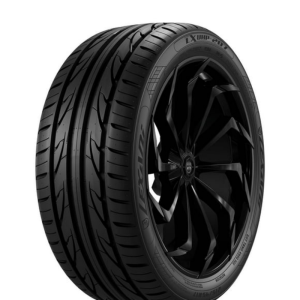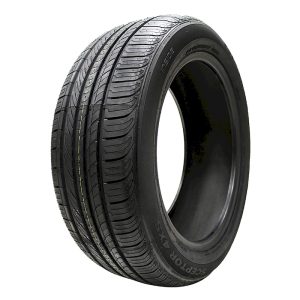
Introduction to Flaring Tools
Flaring tools are essential for creating tight, durable connections in metal tubing, making them invaluable in various trades and DIY projects. This specialized tool can be used across numerous applications, from plumbing and HVAC systems to automotive and even aerospace industries. The purpose of flaring is to create a widened, cone-shaped opening at the end of a tube, enabling it to connect securely to another fitting or pipe. When done correctly, flaring not only ensures a leak-proof connection but also enhances the durability and stability of the system under pressure.
In many systems, even a minor leak can lead to significant issues, such as gas escaping in fuel lines or refrigerants leaking from HVAC systems. Therefore, precision in flaring is critical, and using a flaring tool properly is an acquired skill that, once mastered, can greatly benefit both DIY enthusiasts and professionals. Properly executed flares offer a secure connection that resists vibrations and changes in temperature, ensuring the tubing remains intact and sealed even under challenging conditions.

For homeowners and mechanics alike, having a reliable flaring tool on hand is a valuable asset. For example, DIY plumbers can use a flaring tool to secure copper pipes in home plumbing systems, ensuring clean water lines without the risk of leaks. Automotive enthusiasts and mechanics, on the other hand, rely on flaring tools for secure brake and fuel line connections, which are critical for vehicle safety and performance.
Types of Flaring Tools
There are various types of flaring tools, each suited for specific applications and tubing materials. Here’s an overview of the primary types:
Single Flaring Tool
The single flaring tool is ideal for basic tasks involving soft metal tubing like copper. It creates a single flare at the end of the tube, which works well for lower-pressure applications.
Double (Inverted) Flaring Tool
A double flaring tool is necessary for tubing that requires extra durability, such as automotive brake lines. It creates a flare that folds back on itself, reinforcing the end of the tube and providing a stronger, more reliable connection.
Swaging Tool
Swaging tools are slightly different, as they’re used to increase the diameter of a tube end, allowing one tube to fit snugly over another. These tools are useful in HVAC work and refrigeration.
Flare Nut Wrench
While not a flaring tool itself, the flare nut wrench is used in conjunction with flared connections. Its specialized design helps prevent stripping or damaging the flared fittings, ensuring they remain securely fastened.
Choosing the Right Tool for Your Project
Compatibility with Tubing Diameter
Different flaring tools are designed to handle a range of tubing sizes, so it’s important to select a tool that fits the diameter of the tubing you’ll be working with. If you’re working on a project with various tube sizes, consider a versatile, adjustable tool that can accommodate multiple diameters. This flexibility can save time and money, as you won’t need to switch tools mid-project or purchase multiple sets.

Type of Flare Needed
Knowing whether you need a single, double, or bubble flare is essential, as each serves a different purpose:
- Single Flare: This is a standard flare that’s quick and simple to make, suitable for lower-pressure applications, like basic plumbing repairs.
- Double Flare: Often used in automotive and HVAC systems, double flaring involves creating a second, reinforced flare that provides extra strength and leak resistance. This type is crucial for handling higher-pressure systems, particularly those exposed to vibrations.
- Bubble Flare: Common in European vehicle brake systems, bubble flares are somewhat rare but may be necessary depending on your specific requirements.
Each of these flaring types requires a compatible tool, so be sure to choose accordingly.
Precision and Ease of Use
A high-quality flaring tool will offer precision and ease of use, which makes all the difference when working on intricate systems. Look for tools with a secure grip and smooth operation, as these features can make the flaring process easier and more accurate, especially in delicate situations like brake line repairs. Tools with a self-centering feature are particularly useful, as they help align the tubing for a cleaner, more consistent flare.
Preparation: Essential Tips for Flaring Success
Proper preparation is key to achieving a successful flare. Follow these steps to ensure the process goes smoothly:
- Cut the Tubing: Use a tubing cutter to ensure a clean, straight cut on the end of the tube. Avoid using a hacksaw, as it can leave jagged edges and deform the tubing.
- Deburr the Tube: Use a deburring tool to remove any rough edges or burrs on the cut end. These imperfections can interfere with the flare’s effectiveness and may lead to leaks.
- Select the Right Die Size: Ensure the die in your flaring tool matches the tubing size. Using the wrong size can result in an uneven or weak flare.
Thorough preparation helps ensure the flare is uniform, secure, and free from defects, which is crucial for leak prevention.
How to Use a Flaring Tool Step-by-Step
Once you’ve prepared the tubing, it’s time to use the flaring tool. Follow these steps carefully for a perfect flare:
Step 1: Clamp the Tubing
Insert the tube into the correct hole on the flaring tool’s bar, leaving about 1/8 inch of the tube protruding. Tighten the clamp to secure the tube in place, ensuring it doesn’t move during the flaring process.
Step 2: Insert the Die (for Double Flares)
If you’re creating a double flare, place the correct-sized die on top of the tube. This die helps form the initial bubble shape, which is essential for double flares.
Step 3: Form the Flare
Position the flaring cone over the tube and align it with the tube’s center. Turn the handle to apply pressure, pushing the cone into the tube to form the flare. For double flares, press the die into the tube first, then proceed with the flaring cone.

Step 4: Remove the Tool
Once you’ve created the flare, carefully remove the tool and inspect your work. The flare should be even, with no cracks or rough edges.
Step 5: Inspect and Clean
Examine the flare for uniformity and check for any defects. If the flare is uneven, you may need to start over with a fresh cut. Clean the flare to remove any debris or shavings before installation.
Common Mistakes to Avoid
Flaring can be tricky, especially for beginners. Here are some common mistakes to avoid:
- Incorrect Tube Length Protrusion: If too much or too little tubing extends from the clamp, the flare will be uneven.
- Not Deburring the Tube: Failing to deburr can result in sharp edges, affecting the seal quality.
- Rushing the Process: Applying too much pressure too quickly can crack the tubing or create an uneven flare.
Taking your time and following each step carefully will lead to more successful flares.
Tips for Ensuring a Perfect Flare Every Time
Here are some additional tips to help you master the art of flaring:
- Use Quality Tubing: Inferior tubing materials are prone to cracking. Always use tubing that’s suitable for flaring.
- Lubricate the Tool: Adding a drop of oil to the flaring cone can make the process smoother and reduce friction.
- Practice on Scrap Pieces: If you’re new to flaring, practicing on scrap tubing will help you get a feel for the tool and process.

Frequently Asked Questions
Can I use a flaring tool on plastic tubing? No, flaring tools are designed for metal tubing. Plastic tubes can be damaged by the pressure exerted during flaring.
What is the difference between single and double flaring? Single flaring creates a single flare at the end of the tube, while double flaring folds the tube back on itself, creating a stronger connection.
Do I need a flaring tool for brake lines? Yes, a flaring tool is essential for creating double flares in brake lines, ensuring a secure, leak-proof connection.
Conclusion & Call-to-Action: Achieve Perfect Flares with the Right Tool
Achieving perfect flares with the right tool is all about combining the correct equipment with careful technique. When you master the use of a flaring tool, you open up the possibility to create secure, leak-free connections that are essential for plumbing, automotive, HVAC, and even refrigeration systems.

A high-quality flare is not only about fitting pipes together but also about preventing costly leaks, minimizing maintenance, and ensuring that your systems can handle high-pressure situations without failure. The precision required for these flares is essential because even a slight imperfection can lead to pressure loss or, worse, a dangerous leak. That’s why investing in the right flaring tool is key—it provides you with the precision, control, and durability needed to create clean, consistent flares every time.
